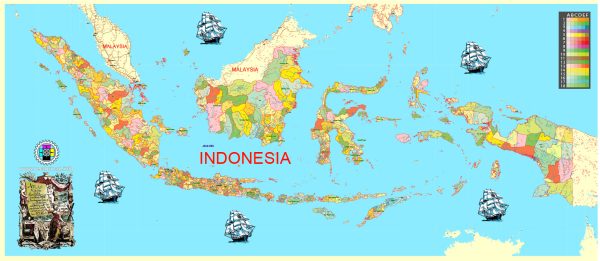General overview of Indonesia’s maritime and air transportation systems.
Maritime Transportation:
- Archipelagic Nature:
- Indonesia is an archipelagic nation comprising over 17,000 islands, making maritime transportation vital for connectivity.
- Ports:
- Indonesia has numerous seaports, ranging from large international ports to smaller regional ones.
- Major ports include Tanjung Priok in Jakarta, Tanjung Perak in Surabaya, and Belawan in Medan.
- Shipping Industry:
- The country has a well-developed shipping industry, and maritime transport is crucial for the movement of goods and people between islands.
- A variety of vessels, including cargo ships, ferries, and traditional boats, are used for transportation.
- Challenges:
- Challenges include the vast geographical spread, diverse weather conditions, and issues related to maritime safety and security.
Air Transportation:
- Airports:
- Indonesia has numerous airports, ranging from international airports in major cities to smaller regional and domestic airports.
- Soekarno-Hatta International Airport in Jakarta and Ngurah Rai International Airport in Bali are among the busiest.
- Airlines:
- Garuda Indonesia is the national flag carrier, but there are also several other domestic and international airlines serving the country.
- Domestic Connectivity:
- Air travel is crucial for connecting the vast archipelago. Domestic flights connect major cities and remote areas.
- Tourism:
- Air transportation plays a significant role in supporting Indonesia’s tourism industry, bringing in international visitors to popular destinations like Bali, Jakarta, and Yogyakarta.
- Infrastructure Development:
- Indonesia has been investing in airport infrastructure development to accommodate the growing demand for air travel.
- Challenges:
- Challenges include the need for further infrastructure development, improving air safety standards, and addressing air traffic congestion in major hubs.
It’s important to note that the information provided is a general overview, and for the latest and more detailed information, you may want to refer to more recent sources or official government publications. Additionally, developments in transportation infrastructure can occur, so checking with local authorities or official sources would provide the most up-to-date information.


 Author: Kirill Shrayber, Ph.D.
Author: Kirill Shrayber, Ph.D.